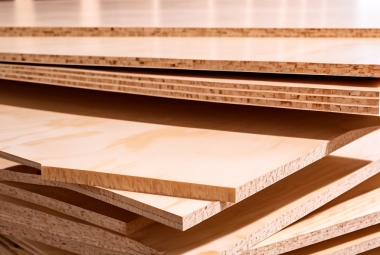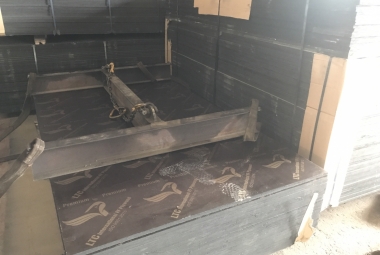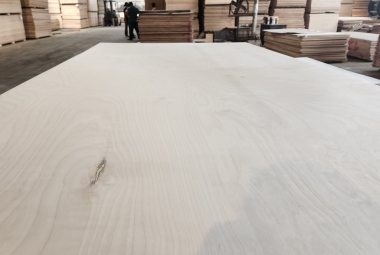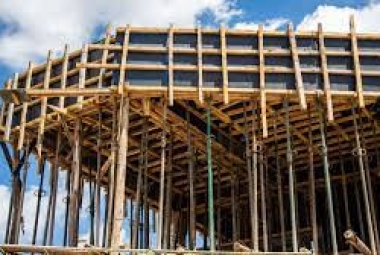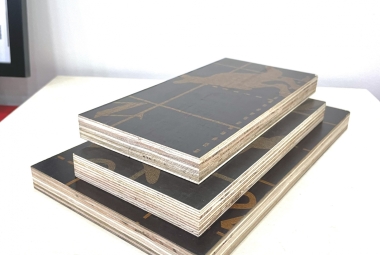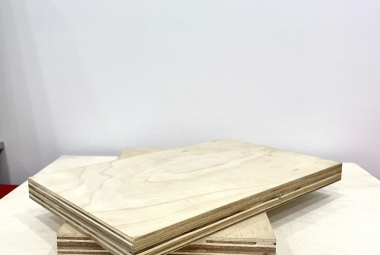What is plywood?
Plywood is a type of engineered wood that is widely used in the United Kingdom. It is made up of many layers of veneer, which are essentially very thin sheets of wood that are bound together with resin adhesive and cured with heat and pressure. The sheets will be arranged so that the grain rotates 90 degrees on each layer, adding strength. In many circumstances, the veneer of the outer facing or facings will be of a better grade in order to improve the appearance of the plywood.


How is plywood manufactured?
Plywood panels are made up of many layers or plys of softwood veneer glued together, with the grain direction of each layer perpendicular to the grain direction of the adjacent layers. These cross-laminated wood veneer sheets are bonded together with a waterproof phenol-formaldehyde resin glue and cured under heat and pressure. Plywood in BC is typically created from softwood species such as Douglas-fir or spruce, pine, and fir (together known as Canadian softwood plywood—or CSP). The most frequent measurement is 4 feet 8 feet.
The thickness of plywood varies, with 1/2 inch being the most typical. When it comes to plywood, there are numerous options available, ranging from smooth, natural surfaces appropriate for finish work to more cost-effective unsanded grades used for sheathing. This comprises a dozen standard thicknesses as well as nearly twenty distinct grades. In Canada, Graded Douglas-fir Plywood (DFP) is manufactured in Canada to meet the Canadian Standards Association (CSA) O121 standard, and CSP to CSA O151.
What is the function of plywood?
Plywood is widely produced as both a softwood and a hardwood, and it is available in a variety of finish grades depending on its intended use.
Here are some examples of how plywood is used and why it is such a good material for such purposes:
1. Exterior Wall Sheathing
A 2 foot x 4 foot or 2 foot by 6 foot frame skinned in exterior-grade plywood sheathing is the most common wall construction on new homes, particularly in North America.
Plywood panels are fastened to each stud to add strength and prevent vertical or horizontal shifting, thereby keeping the frame structure intact and square.
Because of its flexible properties, this technique creates a structure that performs well in high winds and earthquakes.
2. Interior Walls
Certain plywoods are suitable for wood paneling or framing interior stud walls.
Most of the time, the plywood will not be visible in the final finish; however, some highly finished A-graded plywoods are excellent for facing inwards and can be painted or stained to create a stunning natural wood finish.
3. Roofing and Flooring
Plywood is commonly used to sheath roofs and as a subfloor in a variety of interior flooring projects.
Plywood panels on floors may have tongue-and-groove edges that slot together to carry the required load without shifting or movement, whereas on roofs, they can act as a very durable and suitable skin prior to laying tiles, metal, or a membrane.
Plywood is ideal for both of these applications.
4. Other Construction
It's not uncommon to see eaves and soffits with a plywood skin or entirely made of plywood.
Some plywoods are designed specifically for use as siding products, with the appearance of reverse board and batten siding.
Builders frequently use plywood boards to construct detached garages and sheds, as well as temporary floors and concrete forms.
5. Furnitures
Plywood can be a very practical and cost-effective material for making furniture.
When only one side of the structure needs to look nice, a high grade plywood can be used, while a lower grade finish is fine for the rest of the structure.
Within reason, plywood is suitable for almost any furniture project imaginable, so it's not uncommon to find it used in custom built dressers, wardrobes, built in media centers, shelves, bookcases, console tables... the list is practically endless!
6. Cabinets
Plywood is ideal for making cabinet carcasses for kitchens, bedrooms, and other applications.
In most cases, good quality plywood is more than adequate for use on the backs and sides of cabinets and is a far superior material to traditional chipboard or MDF because it lasts longer, does not split, and is far more durable.
7. General Projects
Because of its versatility, plywood is ideal for a wide range of other home projects, including the construction of skateboard ramps, rabbit hutches, and doghouses.
Home improvement enthusiasts adore plywood because it is ideal for creating useful items such as workbenches, sawhorses, simple step stools, and storage bins.
In fact, we've published a few simple DIY projects using plywood sheets of our own.
Why not look at some of them and see just a few of the many practical ways you can use plywood around the house?
It's a fantastic product that comes in a variety of thicknesses and grades, ranging from exterior with moisture exposure to interior dry application.
It always produces an excellent, strong finish and is inexpensive.
Ho Chi Minh City, 17 November, 2023


